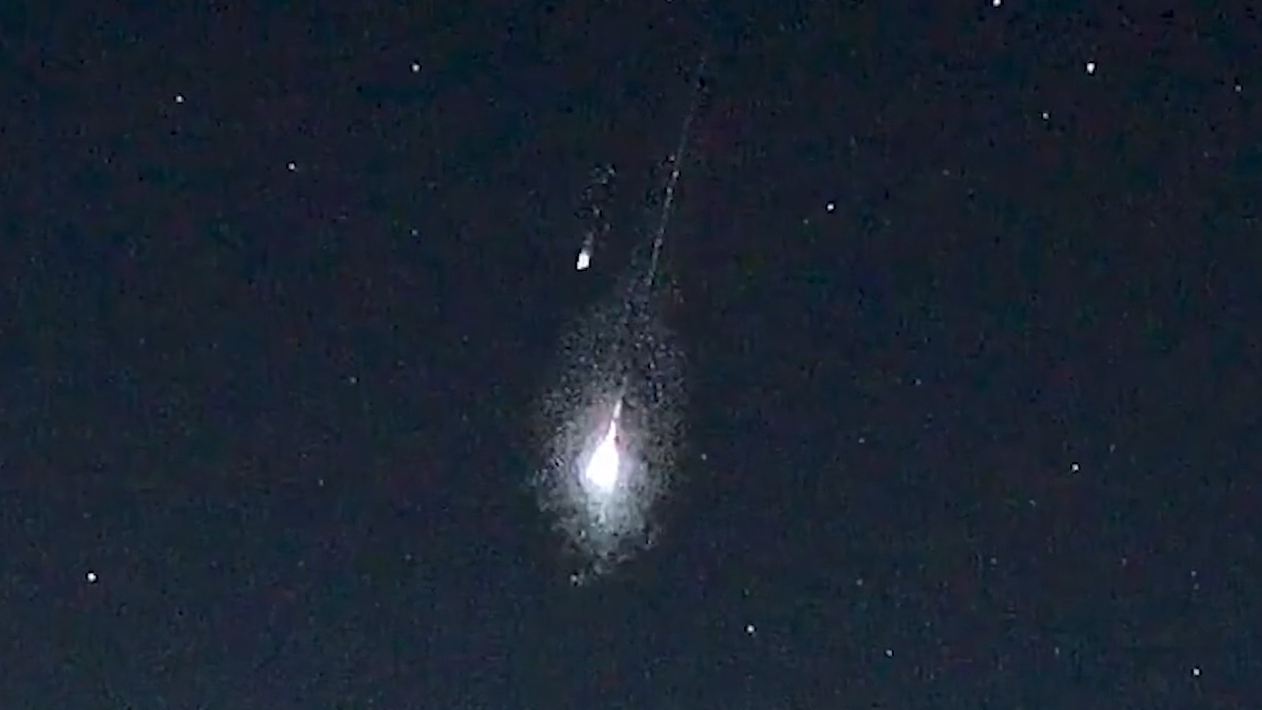Huge Moon Crater Offers Window to Past
Abig crater inside a huge crater on the moon could offer a view of the lunarinnards, scientists now say.
Here'sthe setup: Shortly after the moon formed, it got whacked, big time. The result,an enormous crater called the SouthPole-Aitken basin. It's almost 1,500 miles across and more than five milesdeep.
The impactpunched into the layers of the lunar crust, scattering that material across themoon and into space. The tremendous heat of the impact also melted part of thefloor of the crater, turning it into a sea of molten rock.
"This isthe biggest, deepest crater on the moon — an abyss that could engulf the UnitedStates from the East Coast through Texas," exlained Noah Petro of NASA'sGoddard Space Flight Center.
But wait, therewas more.
Asteroidbombardment over billions of years has left the lunar surface pockmarkedwith craters of all sizes, and covered with solidified lava, rubble, and dust.Glimpses of the original surface, or crust, are rare, and views into the deepcrust are rarer still.
Now, scientistssay a crater on the edge of the South Pole-Aitken basin may provide just such aview. Called the Apollo Basin and formed by the later impact of a smallerasteroid, it is about 300 miles across.
Breaking space news, the latest updates on rocket launches, skywatching events and more!
"It's likegoing into your basement and digging a deeper hole," Petro said.
"We believethe central part of the Apollo Basin may expose a portion of the moon's lowercrust," he said. "If correct, this may be one of just a few places onthe moon where we have a view into the deep lunar crust, because it's notcovered by volcanic material as many other such deep areas are. Just asgeologists can reconstruct Earth's history by analyzing a cross-section of rocklayers exposed by a canyon or a road cut, we can begin to understand the earlylunar history by studying what's being revealed in Apollo."
Petro presentedhis research Thursday at the Lunar and Planetary Science meeting in Houston. Itwas done using the moon Mineralogy Mapper (M3), a NASA instrument on boardIndia's Chandrayaan-1 lunar-orbiting spacecraft. Analysis of the light, orspectra, in images revealed that portions of the interior of Apollo have asimilar composition to the impact melt in the South Pole-Aitken (SPA) basin.
As you go deeperinto the moon, the crust contains minerals have greater amounts of iron, theresearchers explained in a statement. When the moonformed, it was largely molten. Minerals containing heavier elements, likeiron, sank down toward the core, and minerals with lighter elements, likesilicon, potassium, and sodium, floated to the top, forming the original lunarcrust.
"Theasteroid that created the SPA basin probably carved through the crust andperhaps into the upper mantle," Petro said. "The impact melt thatsolidified to form the central floor of SPA would have been a mixture of allthose layers. We expect to see that it has slightly more iron than the bottomof Apollo, since it went deeper into the crust. This is what we found with M3.However, we also see that this area in Apollo has more iron than thesurrounding lunar highlands, indicating Apollo has uncovered a layer of thelunar crust between what is typically seen on the surface and that in thedeepest craters like SPA."
The lower crustexposed by Apollo survived the impact that created SPA probably because it wason the edge of SPA, several hundred miles from where the impact occurred,according to Petro.
Both SPA and Apollo are estimated to be among the oldest lunarcraters, based on the large number of smaller craters superimposed on top ofthem. As time passes, old craters get covered up with new ones, so a cratercount provides a relative age; a crater riddled with additional craters isolder than one that appears relatively clean, with few craters overlying it. Ascraters form, they break up the crust and form a regolith, a layer of broken uprock and dust, like a soil on the Earth.
Although theApollo basin is ancient and covered with regolith (what we call dirt on Earth),it still gives a useful view of the lower crust because the smaller meteoriteimpacts that create most of the regolith don't scatter material very far.
"Calculationsof how the regolith forms indicate that at least 50 percent of the regolith islocally derived," said Petro. "So although what we're seeing with M3has been ground up, it still mostly represents the lower crust."
Earth was bombardedback then, too. But the record of the events have been folded back into ouractive planet or weathered away. On the moon, which is comparatively deadgeologically, the record of scars remains.
"The Apolloand SPA basins give us a window into the earliest history of the moon, and themoon gives us a window into the violentyouth of Earth," Petro said.
- Space.com: All About the Moon
- Video - Watch a NASA Probe Crash Into the Moon
- The Greatest Moon Crashes Ever
Join our Space Forums to keep talking space on the latest missions, night sky and more! And if you have a news tip, correction or comment, let us know at: community@space.com.

Space.com is the premier source of space exploration, innovation and astronomy news, chronicling (and celebrating) humanity's ongoing expansion across the final frontier. Originally founded in 1999, Space.com is, and always has been, the passion of writers and editors who are space fans and also trained journalists. Our current news team consists of Editor-in-Chief Tariq Malik; Editor Hanneke Weitering, Senior Space Writer Mike Wall; Senior Writer Meghan Bartels; Senior Writer Chelsea Gohd, Senior Writer Tereza Pultarova and Staff Writer Alexander Cox, focusing on e-commerce. Senior Producer Steve Spaleta oversees our space videos, with Diana Whitcroft as our Social Media Editor.
